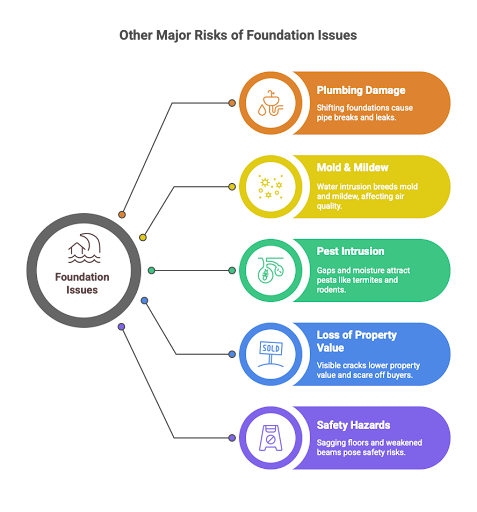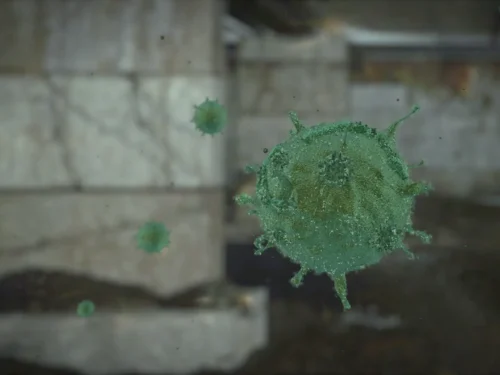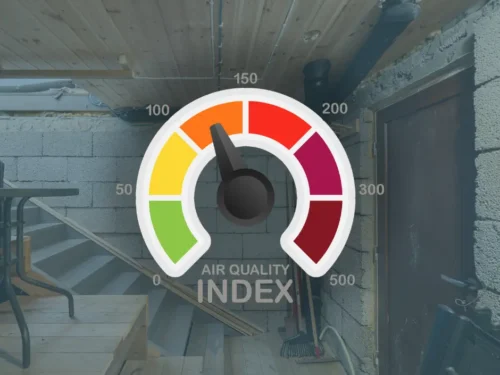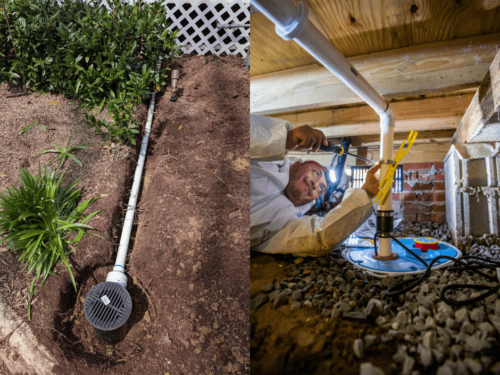What if the cracks in your walls weren’t just cosmetic?
What if they were your home’s way of screaming for help?
Most homeowners don’t think about their foundation until something feels off—
A door won’t close. The floor starts to slope. You notice a crack that wasn’t there yesterday.
And then the question hits: “Can a house actually collapse from foundation issues?”
The answer: Yes.
But here’s the part most people don’t realize — it usually starts small, and it happens slow.
Let’s break it down step-by-step in simple, real-world language—so you’re not left guessing whether your home is still safe.
Why Your Foundation Is Everything
Think of your home’s foundation like the roots of a tree. If the roots are weak, the whole structure is unstable—no matter how pretty the outside looks.
Your foundation does three critical things:
- Holds the entire weight of the home
- Spreads that weight evenly to prevent shifting
- Protects against moisture, soil movement, and weather
When the foundation starts to weaken, your entire house starts to show it—walls crack, floors sink, doors stick, and eventually… yes, the structure can collapse.
Can a House Collapse from Foundation Issues?
Short answer: Yes. But it doesn’t happen overnight.
A collapsing home due to foundation failure isn’t just a theoretical risk—it’s a real-world possibility. While full-on collapse is rare, partial structural failure (walls cracking, floors dropping, beams buckling) is far more common—and it all starts with small, preventable issues.
Let’s walk through how it actually happens, step-by-step.
1. Cracks in Your Slab Foundation Let in Water or Signal Structural Stress
The first visible sign is often cracks in your slab foundation. These can appear hairline-thin or wide enough to fit a coin. Either way, they’re not just surface-level cosmetic issues.
- Why it matters: Cracks signal movement—either from settling, expanding soil, or poor construction.
- What happens next: Water seeps through these cracks. Over time, moisture weakens the concrete, corrodes any embedded steel (rebar), and accelerates erosion under your slab.
Result: Your foundation becomes vulnerable, and the soil beneath it may start washing away or compressing.
2. Soil Under the Home Shifts or Loses Strength
Your foundation is only as strong as the ground it rests on.
- Expansive soils (like clay) swell with water and shrink during drought, pushing and pulling your foundation constantly.
- Loose-fill soils, often used in subdivisions, may settle unevenly.
- Erosion from poor drainage can literally wash soil out from under the house.
Result: These shifts create voids (empty spaces) under the slab. Without solid support beneath, parts of your foundation begin to sag or tilt.
3. Pressure Builds on Key Structural Points
When part of the foundation drops or shifts, the load-bearing points of your home (like beams, joists, and walls) no longer receive even support.
Here’s how that affects your house:
- Load isn’t spread evenly anymore. More pressure lands on certain areas.
- Beams start bowing or cracking.
- Interior walls separate, causing visible gaps or diagonal cracks.
- Windows and doors twist, refusing to close properly.
Result: Your home is now carrying weight in ways it wasn’t designed to. That stress builds up over time—and if it hits a breaking point, you’re in real danger.
4. Structural Components Begin to Fail
This is when things get serious.
- Wood joists begin to rot or snap under stress
- Floorboards separate, become soft, or feel “bouncy”
- Steel rebar inside the foundation may corrode due to moisture
- Concrete starts to crumble or spall (break apart in chunks)
These aren’t just cosmetic issues. Once load-bearing parts fail, the structure no longer supports itself properly.
Result: You’re now on a path toward partial or total collapse, especially if the problem spreads or isn’t repaired quickly.
5. Collapse Becomes a Real Risk
If left alone, the combination of soil movement, water intrusion, stress overload, and material failure leads to unstoppable damage.
This doesn’t always mean the entire house falls in at once. But you could experience:
- One side of the house dropping lower than the other
- Cracked or caved-in floors
- Detached walls or ceilings
- A full crawl space collapse
- Roof sagging or dipping
In extreme cases—especially in older homes, homes built on improper fill, or those exposed to extreme moisture or seismic activity—a complete house collapse of a section or the entire structure is absolutely possible.
Early Warning Signs That a House Will Collapse
These are the red flags you cannot ignore. If you spot any of these, it’s time to take them seriously.
Foundation problems don’t start with a sudden crash — they whisper. But if you’re listening, your home gives off clear warnings before things turn dangerous.
Let’s break down the most common early red flags, what each one means, what causes it, and how it fits into the bigger collapse risk.
1. Cracks in Your Slab Foundation
What to Look For:
- Cracks wider than 1/8 inch
- Jagged, diagonal, or stair-step cracks
- Gaps between sections of the concrete
- Cracks that grow over time
Why It Matters:
Your slab is supposed to distribute the weight of your house evenly. If it’s cracking, the soil beneath is likely shifting or sinking. This creates uneven pressure, and the concrete reacts by breaking.
The Risk:
Cracks in your slab foundation can lead to:
- Water intrusion
- Soil erosion beneath the home
- Weak spots in structural support
- Accelerated deterioration of concrete and steel
Next Step:
If cracks are spreading or new ones appear, don’t “monitor it” forever. Call a specialist to inspect what’s happening beneath the surface. What looks small could be the beginning of a major shift.
2. Uneven or Sloping Floors
What to Look For:
- Floors that lean or dip to one side
- Furniture that wobbles or moves
- You can feel a slope while walking
Why It Matters:
Uneven floors often mean your foundation is settling unevenly — part of the house is dropping lower than the rest. This puts uneven strain on beams and joists, which aren’t built to flex that way.
In crawl space homes, it could also indicate rotting joists, sagging piers, or failed support beams.
The Risk:
- Structural instability
- Cracked tiles or split hardwood floors
- More pressure on walls, which may crack or separate
- Eventual floor collapse in severe cases
Next Step:
Use a ball or level to test slopes. Even slight angles are a red flag. If you’re noticing movement underfoot, it’s time for a professional crawl space or foundation evaluation.
3. Doors & Windows That Stick or Won’t Close
What to Look For:
- Doors that jam or rub against the frame
- Windows that feel tight or won’t lock properly
- Gaps between the window frame and the wall
Why It Matters:
Your home’s frame is connected to its foundation. When the base moves or sinks, the frame twists slightly — and that’s enough to throw off the alignment of every door and window.
The Risk:
- Frame damage that spreads through the house
- Increased air leaks and energy loss
- Indicator of shifting structure underneath
Next Step:
Check multiple doors and windows. If several are acting up in different parts of the house, it’s not the door—it’s the foundation shifting beneath you.
4. Wall & Ceiling Cracks (Especially Around Corners)
What to Look For:
- Diagonal cracks above doors and windows
- Horizontal cracks along drywall seams
- Stair-step cracks in brick or block walls
Why It Matters:
Cracks on interior or exterior walls often indicate torsion stress — the house is twisting or being pulled apart unevenly due to foundation movement. The drywall and brick can’t flex, so they crack.
The Risk:
- Reduced structural integrity of walls
- Water and pest entry points
- Cosmetic damage that continues to worsen
Next Step:
Cracks longer than a few inches or that grow over time mean it’s not just settling — it’s structural. A foundation specialist can tell you if repairs are needed now or if monitoring is safe.
5. Warped or Bowing Walls
What to Look For:
- Walls that curve inward or bulge outward
- Noticeable bends in basement walls
- Drywall that feels “spongy” or soft in spots
Why It Matters:
Walls should be straight. Bowing usually occurs in foundation walls, especially basements or crawl spaces, and is caused by hydrostatic pressure — the force of water-saturated soil pressing against the foundation.
The Risk:
- Complete wall failure or collapse
- Sudden flooding if the wall gives way
- Support loss for upper floors
Next Step:
This is a structural emergency. Warping or bowing isn’t just a cosmetic issue — it means the wall is actively failing under pressure. Call a structural repair expert immediately.
6. Chimney Pulling Away from the House
What to Look For:
- Gaps between the chimney and the house siding
- Cracks around the chimney base
- Chimney visibly leaning or tilted
Why It Matters:
Chimneys are heavy and often sit on separate footings. If your foundation moves while the chimney footing doesn’t—or vice versa—you’ll see them pull apart. This is a clear signal of uneven foundation movement.
The Risk:
- Masonry collapse
- Roof leaks where the chimney exits
- Falling debris or structural hazard
Next Step:
Measure the gap over time. If it’s growing—or the chimney is leaning—bring in a foundation expert ASAP. The solution could involve stabilizing the footing or underpinning the foundation beneath.
7. Sinking or Settling Earth Around the House
What to Look For:
- Soil pulling away from your foundation
- Gaps under walkways or porches
- Soft spots or depressions in the yard near the base
Why It Matters:
Sinking earth = shifting support. This often results from:
- Poor drainage washing away soil
- Erosion from roof runoff
- Improper grading or fill dirt compacting over time
The Risk:
- Voids under the slab
- Cracks in your slab foundation from lack of support
- Drainage problems that worsen foundation issues on a house
Next Step:
This is a signal to check both soil conditions and foundation stability. A soil expert or foundation contractor can test compaction and identify the best fix—whether it’s regrading, adding piers, or correcting drainage.
What Causes Foundation Failure?
Understanding why your foundation is struggling helps you stop future damage and plan smarter repairs. Here are the main culprits:
Soil Movement & Differential Settlement
One of the most common (and most overlooked) causes of foundation problems is differential settlement. That means different parts of your foundation settle at different rates.
Why it happens:
- Soil beneath your home isn’t consistent (clay on one side, sand on the other)
- Fill dirt used during construction wasn’t compacted properly
- Moisture causes expansion in some spots, but not others
The result:
When the ground doesn’t settle evenly, parts of your foundation shift, sink, or lift. This causes cracks in your slab foundation, uneven floors, and strain on walls and doors.
Excessive Moisture & Water Intrusion
Water is the enemy of stability when it comes to your foundation.
Causes of excess moisture:
- Poor drainage around your home
- High water table in your area
- Leaky plumbing under the slab
- Rainwater pooling near the foundation
What it does:
- Saturated soil swells and puts pressure on your foundation (called hydrostatic pressure)
- Water can wash away the soil (known as soil erosion)
- Moisture invites mold and mildew growth in crawl spaces
- Over time, your foundation shifts, sinks, or cracks
Swelling-Shrinking Cycle of Expansive Soils
Not all soil is created equal. Some — especially clay-heavy soil — expands when wet and shrinks when dry. This constant push-pull stresses your foundation.
What happens:
- During rain: Soil expands, pushes up against the foundation
- During drought: Soil contracts, creating air pockets and gaps
- The slab moves up and down repeatedly, cracking over time
Why it matters:
This “yo-yo” effect can literally tear a foundation apart from beneath. The repeated stress weakens concrete, displaces support beams, and causes structural fatigue.
Improper Construction Techniques
Sadly, many foundation problems stem from how the home was built in the first place.
Common mistakes include:
- Shallow footings that don’t reach stable soil
- No steel reinforcement (rebar) inside the concrete
- Poor-quality concrete mix
- Inadequate soil compaction before pouring the foundation
- No moisture barrier installed beneath the slab
Why it matters:
Even brand-new homes can show signs of foundation settlement within months if these steps are skipped. If your builder cut corners, your home might be on unstable ground—literally.
Natural Disasters and Seismic Events
Mother Nature doesn’t play by the rules—and your foundation pays the price.
Events that cause damage:
- Earthquakes
- Flooding
- Hurricanes and tornadoes
- Frost heave in cold climates
- Wildfires (which affect soil stability)
What happens:
Seismic activity shakes the ground, disrupting the soil beneath your home. Flooding saturates the base, weakening structural materials. Even intense wind can cause uneven soil compaction over time.
Why it matters:
If your foundation wasn’t built to handle extreme conditions, it may begin to shift or fail much faster after a natural event.
Poor Drainage Around the Home
When water isn’t directed away from your foundation, it creates constant pressure and erosion beneath your home.
Common causes:
- Bad grading (land slopes toward your house)
- Downspouts releasing water too close to the foundation
- Standing water near your slab or crawl space
What it does:
This causes soil erosion, which removes the support your foundation needs. Over time, the structure begins to shift and settle unevenly.
Mold, Mildew & Crawl Space Humidity
This is especially dangerous for homes with crawl space foundations.
What causes it:
- Moisture seeping through vents or cracks
- Inadequate vapor barriers
- Flooding or standing water
- High humidity trapped under the house
The damage it does:
- Weakens wood beams and floor joists
- Leads to rotting subfloor
- Attracts pests (termites, carpenter ants)
- Creates dangerous air quality inside your home
Eventually, floor support can sag or collapse, leading to uneven flooring and serious safety risks.
Why Knowing the Cause Matters
Each foundation issue has a different fix.
- A crack caused by moisture needs waterproofing and drainage correction
- A shifting slab caused by soil issues might need piers and leveling
- Crawl space sagging could require joist repair or beam replacement
- Construction flaws may require total reinforcement from the ground up
That’s why a thorough inspection is so important: guessing the cause can lead to wasted time and money on the wrong repair.
How to Prevent a House Foundation Collapse
Now for the good news—most of the time, you can prevent a total house collapse. It takes awareness, regular checks, and fixing small issues before they snowball.
Get Annual Foundation Inspections
Don’t guess. A yearly inspection by a pro can catch issues early—before they become expensive.
Monitor Cracks in Your Slab Foundation
Use a ruler or chalk to track growth. Are they spreading or widening? If yes, call an expert.
Watch for Moisture Problems
Check basements, crawl spaces, and around the home for dampness, mold, or standing water. If it’s wet, it’s a threat.
Reinforce Weak Areas
Depending on the damage, solutions might include:
- Crawl space jacks
- Slab leveling (slabjacking or mudjacking)
- Steel piers to anchor your home to stable soil
- Vapor barriers or encapsulation to block moisture
- Beam replacement if wood is rotten or sagging
A foundation specialist will guide you to the right solution.
Crawl Space Foundation Problems? Here’s What to Know
Crawl spaces are common in many U.S. homes—but they come with risk. They’re vulnerable to:
- High moisture
- Mold growth
- Rotting support beams
- Termite damage
- Uneven settling
And when a crawl space fails, your whole floor structure is at risk.
Common Fixes for Crawl Space Foundations:
- Subfloor replacement: If moisture damaged the base
- Floor joist repair: To stabilize bouncy or sloping floors
- Encapsulation: Blocks outside air and moisture
- Sump pump installation: Removes water and prevents flooding
- Crawl space jacks: Provides extra support where beams sag
How Long Do Foundation Repairs Take?
It really depends—not just on the type of damage, but also on your home’s square footage and age. Older homes or larger foundations can take longer to assess and fix. But to give you a general idea:
- Small crack repairs: 1–2 days
- Crawl space jacks or supports: 2–4 days
- Slab leveling with piers: 3–7 days
- Full crawl space restoration: 1–2 weeks
A foundation expert will assess your situation and give a custom timeline based on:
- Home size
- Repair type
- Soil conditions
- Weather delays
When to Call a Professional & What to Expect
You don’t need to be an expert to recognize red flags—but you do need to know when to bring one in.
Here’s when to call for help:
- Foundation Specialist: When you see slab cracks, uneven floors, or bowing walls.
- Structural Engineer: For second opinions, severe cracking, or before major repairs.
- Home Inspector: Especially during a real estate transaction or annual home checkups.
What to expect:
- Visual assessment inside and outside your home
- Soil and moisture testing (in some cases)
- Floor slope and structural stress measurements
- A written estimate with findings and repair recommendations
Buying or Selling a House with Foundation Issues
Foundation issues on a house don’t have to kill a real estate deal—but they do require due diligence.
If you’re buying:
- Get a structural inspection before closing
- Use repair estimates as negotiation leverage
- Budget for repairs if the price reflects the risk
If you’re selling:
- Disclose all known issues (it’s the law)
- Consider pre-listing inspections or minor repairs
- Understand that buyers may request price reductions
A foundation problem isn’t the end—it’s just a factor to account for.
Need a Foundation Check-Up?
You’ve seen the signs that a house will collapse. You understand the risks. And you now know that yes — a house can collapse from foundation issues if left ignored.
But collapse is rare. What’s more common—and costly—is waiting too long and letting the damage spread.
Every day you delay could mean:
- Bigger cracks
- Higher repair costs
- And real safety risks for your home and family
We’re not here to scare you — we’re here to help you catch problems before they become disasters.
Contact us now to schedule a FREE inspection. It’s quick. It’s professional. And it could be the difference between a safe home and a collapsing one.








